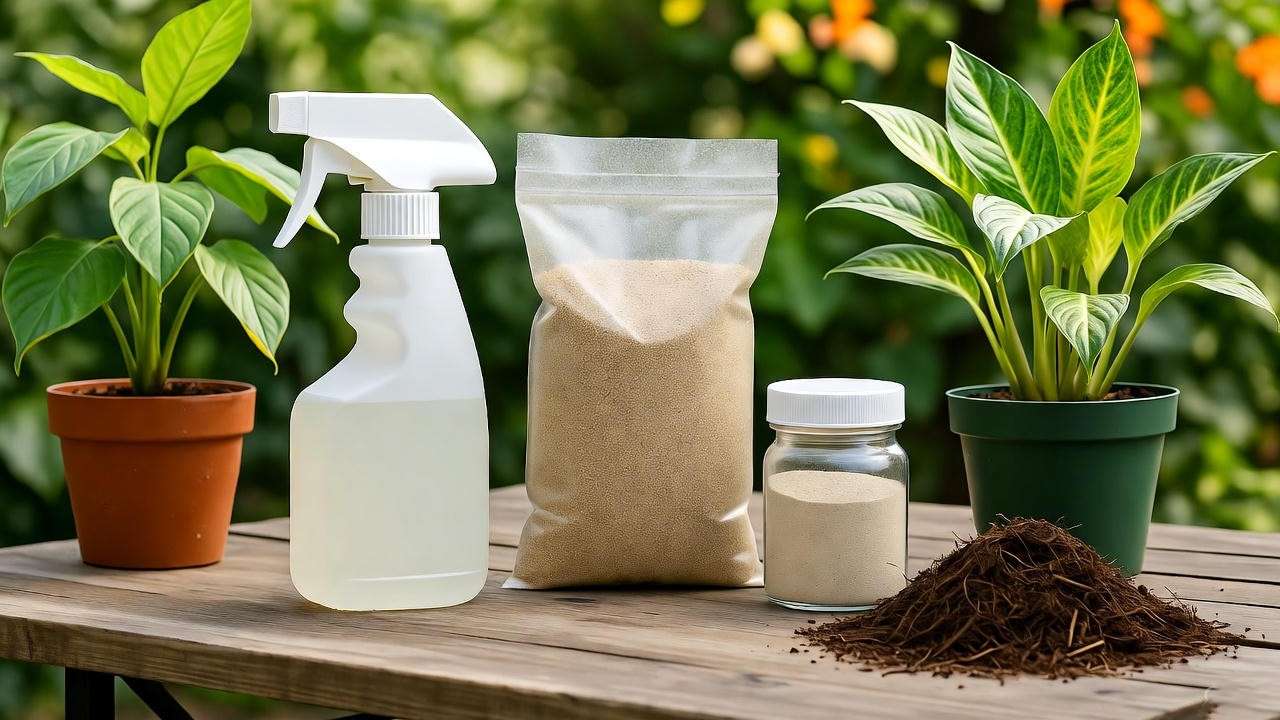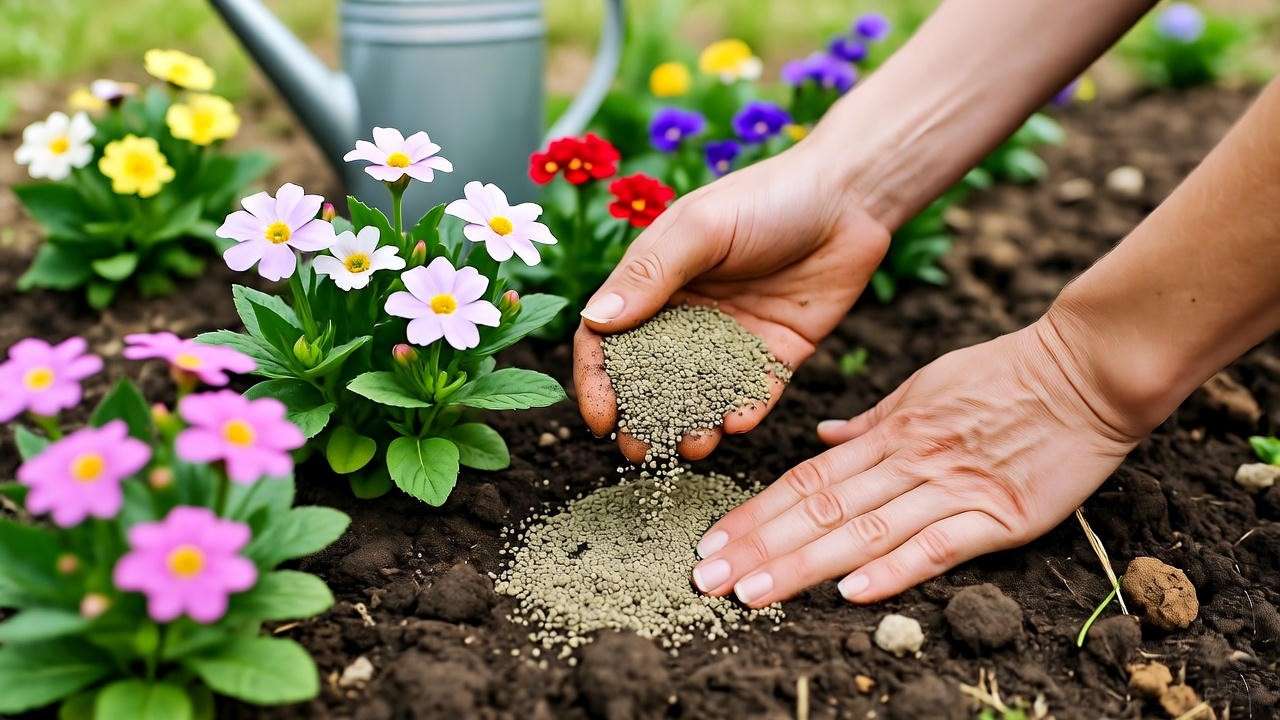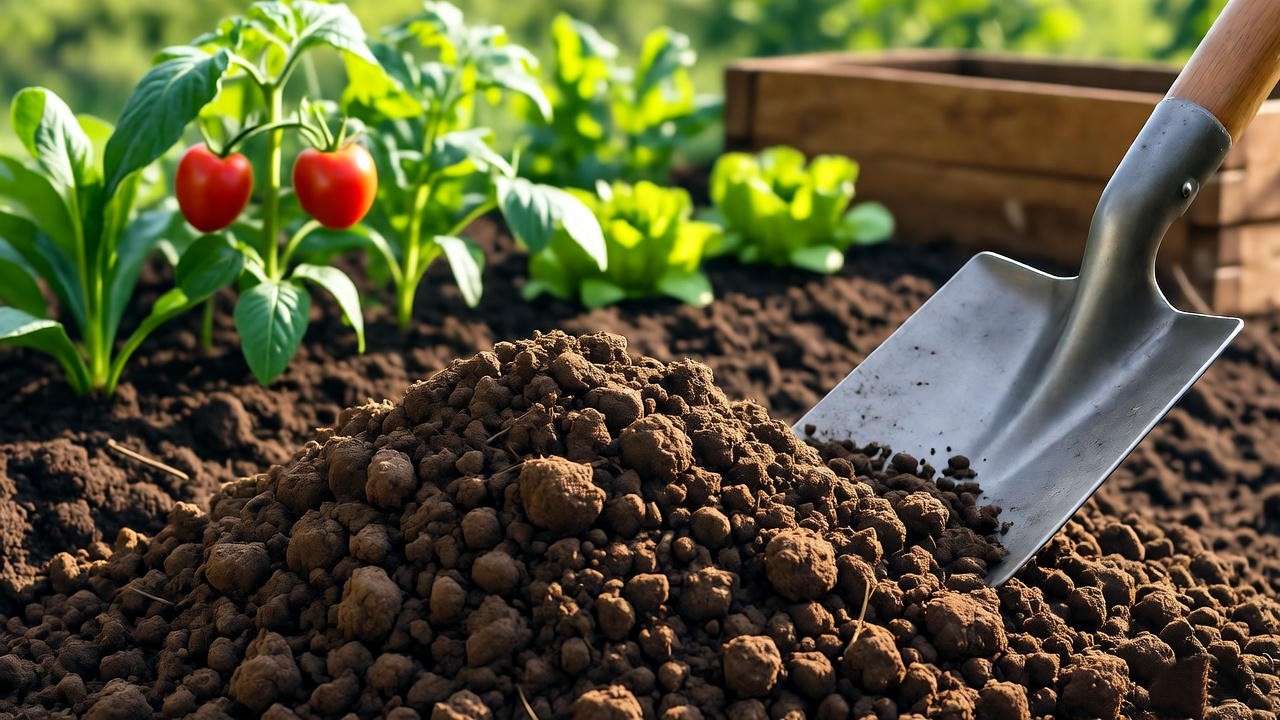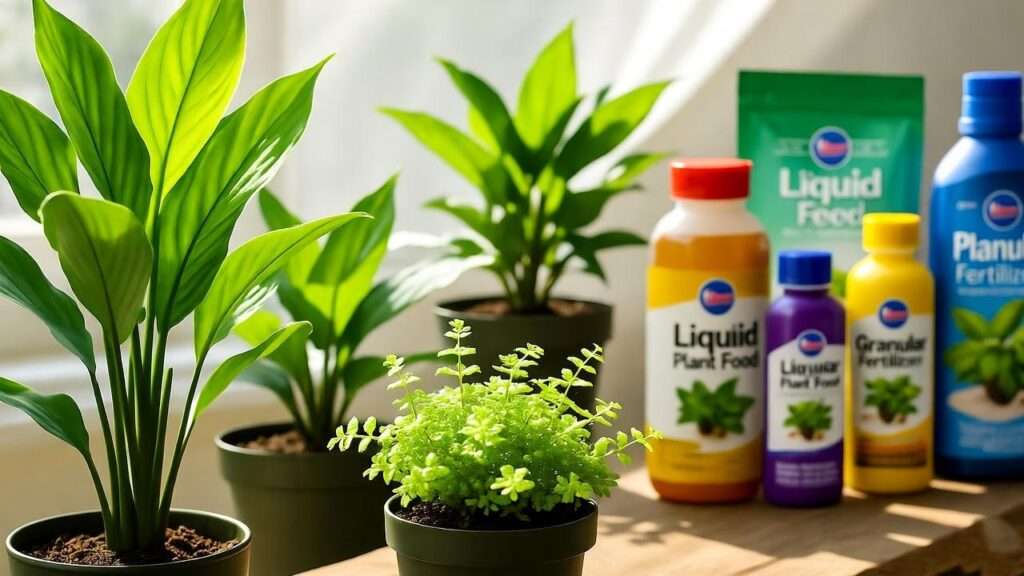Imagine standing in the gardening aisle, staring at rows of colorful bottles and bags labeled “plant food” and “fertilizer,” feeling utterly confused. Which one do your plants need to thrive? The terms plant food vs fertilizer are often used interchangeably, but they’re not the same—and choosing the wrong one could mean the difference between vibrant blooms and lackluster growth. As a plant care enthusiast, you want to give your greenery the best chance to flourish. This article demystifies the differences, explores their benefits, and provides practical guidance to help you choose the right option for your plants’ growth and health. Backed by horticultural expertise and research, we’ll cover definitions, types, application tips, and more to ensure your plants thrive. 🌸
H2: What Are Plant Food and Fertilizer? Clearing Up the Confusion 🧪
To make informed choices, let’s start with clear definitions of plant food and fertilizer, terms that often cause confusion among gardeners.
H3: Defining Plant Food 🌾
Plant food is a broad term describing products that supply nutrients to plants, often marketed as ready-to-use solutions for home gardeners. Contrary to the name, plants don’t “eat” food like we do. Through photosynthesis, plants create their own energy using sunlight, water, and carbon dioxide. What we call “plant food” is actually a nutrient supplement, typically available as liquid concentrates, water-soluble powders, or slow-release granules. These products deliver essential elements like nitrogen, phosphorus, and potassium (N-P-K) to support growth, flowering, and root development.
For example, a liquid plant food like Miracle-Gro All Purpose Plant Food is popular for its ease of use, providing a quick nutrient boost for houseplants or garden beds. However, the term “plant food” is largely a marketing phrase, designed to appeal to beginners who want simple solutions.
H3: Defining Fertilizer 🌱
Fertilizer, on the other hand, is a specific product formulated to replenish nutrients in the soil that plants need to grow. Fertilizers are categorized into two main types: synthetic (chemically manufactured, like a 10-10-10 granular formula) and organic (derived from natural materials like compost, manure, or bone meal). Their primary role is to correct nutrient deficiencies in the soil, ensuring plants have access to the building blocks for healthy development.
For instance, organic fertilizers like fish emulsion provide slow-release nutrients, while synthetic options like Osmocote offer precise, controlled feeding. Fertilizers are designed for long-term soil health and targeted nutrient delivery, making them a staple for professional gardeners and farmers.
H3: Key Differences Between Plant Food and Fertilizer 📊
While both plant food and fertilizer provide nutrients, their composition, application, and marketing differ significantly. Here’s a quick comparison:
| Aspect | Plant Food | Fertilizer |
| Definition | Broad term for nutrient supplements | Specific product to enrich soil |
| Forms | Liquids, powders, granules | Granular, liquid, organic, synthetic |
| Application Frequency | Often frequent (weekly/monthly) | Varies (monthly/seasonally) |
| Target Audience | Beginner-friendly, home gardeners | Gardeners, farmers, professionals |
| Cost | Moderate, often pricier per use | Varies, organic can be cost-effective |
Expert Insight: According to a 2023 study by the University of California Cooperative Extension, plants absorb nutrients similarly from both plant food and fertilizer, but the delivery method and soil impact differ. Plant foods are often pre-mixed for convenience, while fertilizers require more knowledge to apply effectively.
H2: Why Nutrient Sources Matter for Your Plants 🌼
Understanding the role of nutrients is key to deciding between plant food and fertilizer. Let’s explore why these products are critical for plant health.
H3: The Role of Nutrients in Plant Growth 🌿
Plants require macronutrients (nitrogen, phosphorus, potassium) and micronutrients (like iron, magnesium, and zinc) to thrive. Nitrogen promotes leafy growth, phosphorus supports root and flower development, and potassium enhances overall plant vigor. Micronutrients, though needed in smaller amounts, are equally vital for processes like photosynthesis and disease resistance.
Nutrient deficiencies can lead to visible problems: yellowing leaves (nitrogen deficiency), poor flowering (phosphorus deficiency), or weak stems (potassium deficiency). For example, a tomato plant lacking phosphorus may produce fewer fruits, while a nitrogen-deficient fern may appear pale and stunted.
Case Study: A gardener in Oregon revived their struggling rose bushes by applying a balanced fertilizer (10-10-10) after noticing yellow leaves and sparse blooms. Within weeks, the plants showed vibrant new growth, demonstrating the power of targeted nutrient supplementation.

H3: How Plants Absorb Nutrients 🧬
Plants absorb nutrients primarily through their roots, though some products (like foliar sprays) allow absorption through leaves. Soil health plays a critical role in nutrient availability. For instance, compacted or nutrient-poor soil can limit uptake, even if you apply plant food or fertilizer. Soil pH also matters—most plants thrive in a pH range of 6.0–7.0, where nutrients are most accessible.
Tip: Test your soil’s pH and nutrient levels using a home testing kit (available at garden centers) or send a sample to a local extension service. This data helps you choose the right product and avoid over- or under-feeding.
H2: Types of Plant Food and Fertilizer: What’s Available? 🛠️
With countless products on the market, understanding your options is essential for effective plant care.
H3: Plant Food Options 🌾
Plant foods come in user-friendly forms, making them ideal for beginners. Common types include:
- Liquid Plant Food: Concentrates like Schultz Liquid Plant Food are diluted with water and applied weekly. They’re great for houseplants or container gardens needing quick nutrient boosts.
- Water-Soluble Powders: Products like Miracle-Gro Water Soluble All Purpose Plant Food dissolve in water for easy application, offering flexibility for various plant types.
- Foliar Sprays: These deliver nutrients directly to leaves, ideal for rapid absorption in nutrient-deficient plants.
Pros: Plant foods are convenient, fast-acting, and widely available. Cons: They may require frequent applications and can be more expensive over time.
Example: A homemade plant food recipe using banana peels (rich in potassium) involves soaking peels in water for 48 hours, then using the liquid to water potassium-hungry plants like tomatoes.

H3: Fertilizer Types 🌱
Fertilizers offer more variety, catering to specific needs and gardening styles. They include:
- Synthetic Fertilizers: These provide precise N-P-K ratios (e.g., 20-10-10 for high-nitrogen needs). Slow-release formulas like Osmocote release nutrients over months, reducing application frequency.
- Organic Fertilizers: Options like compost, manure, bone meal, or fish emulsion enrich soil naturally. They improve soil structure and support microbial activity, promoting long-term health.
Comparison Chart:
| Type | Pros | Cons | Best For |
| Synthetic | Precise, fast-acting, long-lasting | Potential environmental impact | Large gardens, specific needs |
| Organic | Eco-friendly, improves soil health | Slower results, variable nutrient levels | Sustainable gardening, edibles |
H3: Specialty Products for Specific Plants 🌸
Some plants demand tailored nutrition. For example:
- Houseplants: Use a balanced liquid plant food (e.g., 10-10-10) for low-maintenance care.
- Vegetables: High-phosphorus fertilizers (e.g., 5-10-10) boost fruit and root crops.
- Trees and Shrubs: Slow-release granular fertilizers (e.g., 12-4-8) support deep root systems.
Expert Tip: For roses, a fertilizer with a 10-20-10 ratio (higher phosphorus) encourages abundant blooms. Check product labels for plant-specific recommendations.
H2: Benefits and Drawbacks: Plant Food vs Fertilizer ⚖️
Both options have unique strengths and weaknesses, depending on your gardening goals.
H3: Advantages of Plant Food 🌟
- Convenience: Pre-mixed plant foods are easy to apply, requiring minimal knowledge.
- Quick Results: Liquid forms deliver nutrients rapidly, ideal for reviving stressed plants.
- Versatility: Suitable for indoor and outdoor plants, from orchids to vegetable gardens.
H3: Advantages of Fertilizer 🌍
- Long-Term Soil Health: Organic fertilizers improve soil structure and microbial activity, benefiting plants over years.
- Cost-Effective: Bulk organic options like compost are affordable for large gardens.
- Targeted Nutrition: Synthetic fertilizers allow precise N-P-K adjustments for specific plant needs.
H3: Potential Downsides and Risks ⚠️
- Plant Food: Frequent applications can lead to overfeeding, causing nutrient burn or salt buildup in soil. They may also be less sustainable due to packaging and production.
- Fertilizer: Synthetic fertilizers risk environmental harm, like waterway pollution from runoff. Organic options may release nutrients slowly, delaying results.
- Tip: To avoid mistakes, apply products during the growing season (spring/summer) and water thoroughly to prevent root burn.
H2: How to Choose Between Plant Food and Fertilizer 🌿
Selecting the right product depends on your plants’ needs, your gardening goals, and practical considerations like budget and sustainability. Here’s how to make an informed decision.
H3: Assessing Your Plants’ Needs 📝
Start by evaluating your plants’ specific requirements. Different plants have unique nutrient needs based on their type, growth stage, and environment. For example, leafy greens like spinach thrive with nitrogen-rich products, while flowering plants like orchids need more phosphorus. Signs of nutrient deficiencies—such as yellowing leaves, stunted growth, or poor flowering—can guide your choice.
Step-by-Step Guide to Assess Needs:
- Observe Symptoms: Check for signs like pale leaves (nitrogen deficiency), weak roots (phosphorus deficiency), or scorched leaf edges (potassium deficiency).
- Test Soil: Use a home soil testing kit or consult a local extension service to measure pH and nutrient levels.
- Consider Plant Type: Houseplants often need frequent, light feeding, while trees benefit from slow-release fertilizers.
- Evaluate Growth Stage: Young plants require balanced nutrients, while mature plants may need specialized formulas for blooming or fruiting.
H3: Considering Your Gardening Goals 🎯
Your gardening objectives play a big role in choosing between plant food and fertilizer. Ask yourself:
- Short-Term Boost or Long-Term Health? If you’re reviving a drooping houseplant, a liquid plant food offers quick results. For a sustainable vegetable garden, organic fertilizers like compost build soil health over time.
- Indoor vs Outdoor? Plant foods are often ideal for indoor plants due to their ease of use, while fertilizers suit larger outdoor gardens or trees.
- Eco-Conscious Gardening? Organic fertilizers align with sustainable practices, reducing environmental impact.
Example: A community gardener in Colorado switched to organic fish emulsion for their tomato beds, resulting in a 20% increase in yield compared to synthetic fertilizers, while also improving soil texture.
H3: Practical Factors: Cost, Availability, and Ease of Use 💸
- Cost: Plant foods like liquid concentrates can be pricier per application, especially for large gardens. Organic fertilizers like manure or compost are often more cost-effective for bulk use.
- Availability: Synthetic fertilizers and plant foods are widely available at garden centers, while organic options may require sourcing from specialty stores or local farms.
- Ease of Use: Plant foods are beginner-friendly, often requiring simple dilution. Fertilizers, especially granular or organic types, may need more effort to apply correctly.
Expert Insight: A 2024 report from the Rodale Institute found that organic fertilizers, while initially slower-acting, can reduce long-term costs by improving soil fertility, cutting the need for frequent applications.
H2: Application Tips for Maximum Plant Health 🌱
Proper application is critical to ensuring your plants get the nutrients they need without harm. Here’s how to use plant food and fertilizer effectively.
H3: How to Apply Plant Food Correctly 💧
- Liquid Plant Food: Dilute according to package instructions (e.g., 1 teaspoon per gallon of water). Apply every 1–2 weeks during the growing season, watering evenly around the plant’s base.
- Granular Plant Food: Sprinkle around the soil surface and water thoroughly to help nutrients penetrate. Use slow-release formulas for less frequent applications.
- Foliar Sprays: Apply to leaves early in the morning or late afternoon to avoid sunburn. Ensure even coverage but avoid over-saturation.
Tip: For houseplants, reduce feeding in winter when growth slows. Overfeeding dormant plants can lead to nutrient buildup and root damage.
H3: Best Practices for Fertilizing 🌾
- Granular Fertilizers: Spread evenly around the plant’s drip line (the area under the outer edge of the canopy) and work into the topsoil. Water deeply after application.
- Liquid Fertilizers: Apply similarly to liquid plant food, ensuring even distribution. Use for quick boosts during active growth.
- Organic Fertilizers: Incorporate compost or manure into the soil before planting, or use as a top-dressing for established plants. Reapply every 1–3 months, depending on the product.
Expert Tip: Follow the N-P-K ratio on fertilizer labels (e.g., 10-10-10 for balanced growth) and adjust based on soil test results. Over-application can cause nutrient burn, visible as brown, crispy leaf tips.

H3: Common Mistakes to Avoid 🚫
- Overfeeding: Too much plant food or fertilizer can harm plants and pollute waterways. Stick to recommended doses.
- Ignoring Soil Tests: Applying products without knowing soil nutrient levels can lead to imbalances.
- Improper Timing: Avoid fertilizing during dormancy or extreme heat, as plants absorb nutrients less effectively.
Checklist for Success:
- ✅ Test soil before applying products.
- ✅ Follow package instructions precisely.
- ✅ Water plants after application to aid nutrient absorption.
- ✅ Store products in a cool, dry place to maintain potency.
H2: Environmental and Sustainability Considerations 🌍
Your choice between plant food and fertilizer impacts not just your plants but also the environment. Sustainable practices are increasingly important for eco-conscious gardeners.
- Synthetic Fertilizers: While effective, they can contribute to environmental issues like waterway pollution from runoff, which causes algal blooms. A 2023 EPA report highlighted that nitrogen runoff from synthetic fertilizers affects 15% of U.S. waterways.
- Organic Fertilizers: These are more environmentally friendly, improving soil biodiversity and reducing chemical runoff. Options like compost or worm castings also recycle organic waste, supporting a circular economy.
- Plant Food: Many commercial plant foods rely on synthetic ingredients and plastic packaging, which may increase their environmental footprint compared to bulk organic fertilizers.
Expert Insight: Research from the University of Minnesota Extension shows that organic fertilizers can increase soil carbon sequestration by up to 10% over five years, making them a greener choice for long-term gardening.
Tip: Create your own compost using kitchen scraps (e.g., vegetable peels, coffee grounds) or try DIY plant food like eggshell tea (rich in calcium) to reduce waste and costs.

H2: FAQs: Answering Common Questions About Plant Food and Fertilizer ❓
Q: Can I use plant food and fertilizer together?
A: Yes, but with caution. Combining them can risk overfeeding, so use soil tests to determine needs and alternate applications to avoid nutrient overload.
Q: How often should I apply plant food or fertilizer?
A: Plant food is typically applied every 1–2 weeks during the growing season. Fertilizers vary—synthetic slow-release types may last 3–6 months, while organic options need reapplication every 1–3 months.
Q: Is organic fertilizer better than synthetic?
A: Organic fertilizers improve soil health and are eco-friendly but act slower. Synthetics offer quick, precise results but may harm the environment if overused. Choose based on your goals and values.
Q: What’s the best choice for indoor plants?
A: Liquid plant foods are ideal for houseplants due to their ease of use and controlled dosing. Look for balanced formulas (e.g., 10-10-10) suited for indoor conditions.
Q: How do I know if my plant needs more nutrients?
A: Look for signs like yellowing leaves, slow growth, or poor flowering. A soil test confirms specific deficiencies, guiding your choice of product.
H2: Conclusion: Making the Right Choice for Your Plants 🌸
The debate of plant food vs fertilizer boils down to your plants’ needs, your gardening style, and your commitment to sustainability. Plant foods offer convenience and quick results, perfect for busy gardeners or indoor plants. Fertilizers, especially organic ones, provide long-term soil health and targeted nutrition, ideal for sustainable gardens or large landscapes. By assessing your plants’ symptoms, testing your soil, and aligning your choice with your goals, you can ensure vibrant, healthy growth.

Take the next step: try a soil test, experiment with a recommended product, or share your plant care journey in the comments below. For more tips, explore our guides on soil health or vegetable gardening. Here’s to nurturing a greener, healthier world, one plant at a time! 🌿













